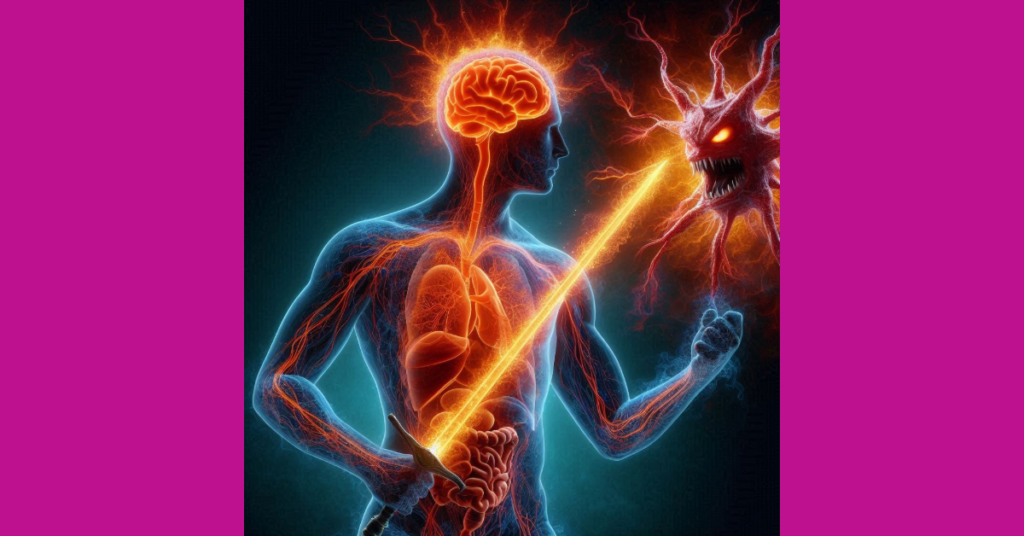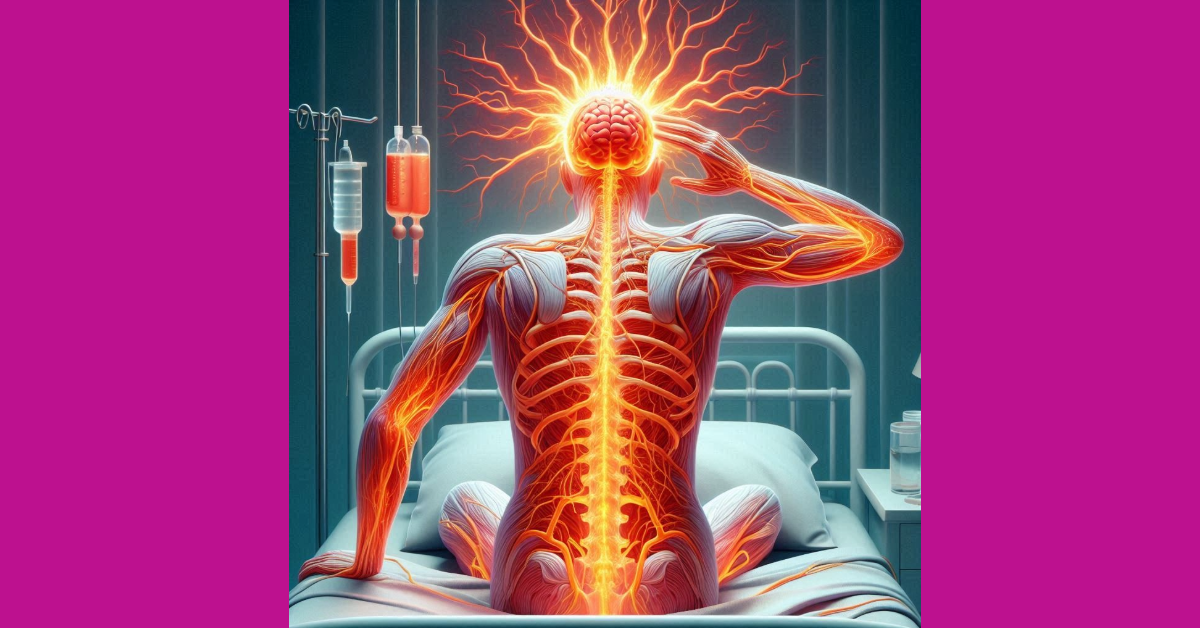Have you ever wondered why we experience fever during illness? For generations, the medical community has upheld the belief that fever is a critical component of our defense system against infections. Experts have been considering fever as an instrument orchestrated by the immune system to create an inhospitable environment for invading pathogens.
This view has literally been universally accepted without much challenge. Some, who did challenge, asked simple minded questions like:
“Pasteurization fails to eliminate 100% of all microbes from milk. Then how can fever, just by raising 1-2 degrees, inactivate bacteria?”
“Viruses live intracellularly clinging to the DNA inside the nucleus. They replicate using our DNA replication system. Does fever inactivate DNA replication of our cells? If not, then fever cannot really eliminate any virus.”
Experts immediately shoot down these simplistic questions by saying that “human immune system is far too complex and each small component (like fever) works in combination with several other defense components. So, although fever itself might not completely inactivate any virus or bacteria on its own, it might make it easier for our immune system to fight and eliminate these microbes.”
However, this long-standing view fails to account for the numerous instances where fever manifests in the absence of infection or persists long after the initial insult has been resolved. These observations challenge the notion that fever is solely a response to microbial threats, prompting the need for a more comprehensive explanation.
Fever can be seen in several diseases of non-infectious origin such as cancer, autoimmune diseases, genetic diseases etc. I worked closely on Fabry Disease which is a genetic disease. Low grade fever is a very common symptom in these patients.
One can get fever after a very painful physical trauma. Even mental trauma can lead to fever if the psychological impact is excruciating enough.
Between 40% and 61% of patients who experience stroke develop fever. More importantly, those patients with fever are far more likely to die within the first 10 days after a stroke than those with lower temperatures. Is that intriguing? Fever is again very common in patients who get heart attack. And again, these patients do worse compared to those who don’t get fever.
It is obvious that in these cases fever is actually a nuisance- it causes more harm than good.
So, the whole theory that fever exists just to increase body temperature and make life a bit difficult for microbes might not be an accurate paradigm. I truly believe that we have been really misinterpreting role of fever.
In this blog post, I delve into a novel hypothesis that proposes a paradigm shift in our understanding of fever. And this paradigm shift directly impacts how we must treat certain patients.
I call this hypothesis as “Micro-Sympathetic Hypothesis.”
Table of Contents
The Sympathetic Nervous System: The Body’s Emergency Responder
Before we unveil the micro-sympathetic hypothesis, it is crucial to understand the role of the sympathetic nervous system in orchestrating our body’s emergency response. The sympathetic nervous system is a branch of the autonomic nervous system responsible for initiating a cascade of physiological changes designed to prepare the body for action when faced with a perceived threat.
So, when you see a bear running towards you menacingly. it is this sympathetic system that prepares you to tackle this life threatening situation. It prepares you to either fight the bear or run away from it as quickly as possible.
Upon activation, the sympathetic system triggers a complex series of events, including an increase in heart rate, blood pressure, and metabolic rate, driven by the release of chemicals such as adrenaline and noradrenaline. This heightened metabolic state is a critical component of the body’s emergency response, enabling the mobilization of energy and resources necessary to combat the perceived threat.
Any war, whether global or cellular, consumes lot of resources!
The Micro-Sympathetic Hypothesis: A Cellular Sentinel of Immunity
Building upon the well-established principles of the sympathetic nervous system, I propose the existence of a “micro-sympathetic system.”. This yet “undiscovered” biological system operates at the cellular level, serving as a sentinel that mounts an emergency response against perceived threats at cellular level.
Just as the sympathetic nervous system prepares the body for action in the face of imminent danger from a large bear, the “micro-sympathetic system” initiates a heightened metabolic state in response to perceived threats at the cellular level. This micro-sympathetic activation can be triggered by a wide range of insults, including infections, inflammation, or even traumatic psychological experiences.
When the body perceives a threat, be it an invading pathogen, a neoplastic cell, or a toxic insult, the micro-sympathetic system initiates a cellular-level emergency response, in line with the sympathetic nervous system’s role in our body’s fight-or-flight response.
Fever: A Byproduct of Heightened Cellular Metabolism
Heat is a very important catalyst for accelerating our biological processes. You must have experienced this yourself- drinking warm water immediately after waking up in the morning magically activates our senses and systems.
Threats at cellular level activates our micro-sympathetic system which then accelerates cellular metabolic processes. This metabolic surge fuels the body’s defense mechanisms, providing the necessary energy and resources to combat the perceived threat. One of the key consequences of this heightened metabolic state is the generation of excess heat at the cellular level. However, when this heat production occurs at sufficiently high levels and persists for an extended duration, it manifests as fever.

This proposed link between the micro-sympathetic system and fever offers a more comprehensive explanation for the diverse range of scenarios in which fever occurs, extending beyond the traditional view of infection-driven responses. It accounts for the presence of fever in non-infectious conditions, such as after dental extractions, traumatic psychological events, or in the context of various diseases like cancer, autoimmune disorders, and genetic disorders, where the body perceives a threat and mounts a cellular-level emergency response.
Moreover, this novel perspective provides a plausible mechanism for the persistence of fever even after the initial trigger has been resolved, as the micro-sympathetic system may remain activated until the perceived threat has been adequately addressed and neutralized.
Recognizing the Warning Signs and Intervening Promptly
The implications of the micro-sympathetic hypothesis are particularly profound in the context of severe infections and inflammatory conditions, notably the phenomenon of cytokine storms. The micro-sympathetic system acts as a catalyst, fueling the body’s immune response to combat threats at the cellular level. One can imagine an activated immune system as fire- a fire that destroys threats. This generates heat which, if sufficiently high, can manifest as fever. But if this fire is too hot and rages for too long, it can destroy our own organ systems. Hence, while this “fire of life” is critical for survival, it must be carefully regulated to prevent it from spiraling out of control into cytokine storms.
During the early waves of the COVID-19 pandemic, many patients succumbed due to cytokine storms, where the immune system went violently out of control in its response to the viral threat, leading to widespread inflammation and tissue damage, particularly in the lungs.

Recognizing the potential for this catastrophic scenario, physicians must remain vigilant for signs that the immune response is becoming dysregulated. Persistent high fever, lasting more than six days, may serve as an early warning signal that the micro-sympathetic system, and by extension the immune system, is becoming overactivated. In such cases, prompt intervention is crucial to modulate the immune response and prevent it from spiraling into a full-blown cytokine storm.
This philosophy helped me intervene with the right medicines at different stages when I and my family got infected with COVID-19 during the delta wave of 2021. I have written a detailed account of this experience in another article, which you can read by clicking here.
The Path Forward: A Nuanced Approach to Managing Severe Infections and Inflammatory Conditions
The management of severe infections and inflammatory conditions must therefore adopt a more nuanced approach, one that considers not only the direct effects of the pathogen or disease or toxin but also the potential for an excessive micro-sympathetic response. Therapies aimed at dampening this micro-sympathetic overactivation, in conjunction with traditional treatments, may prove more effective in mitigating the deleterious consequences of unchecked immune activation.
Furthermore, the micro-sympathetic hypothesis opens new avenues for medical research, enabling a deeper exploration of the cellular mechanisms governing this proposed system and its interplay with the body’s defense mechanisms. By unraveling the intricate workings of the micro-sympathetic system, we may unlock novel therapeutic targets and develop more effective strategies for modulating the immune response, ultimately improving patient outcomes in a wide range of infectious and inflammatory conditions.
Conclusion
The micro-sympathetic hypothesis challenges the long-held belief that fever is solely a direct response to infection. Instead, it positions fever as a consequence of an activated cellular-level emergency response system, offering a more comprehensive explanation for the diverse etiologies of fever and providing a mechanistic framework for understanding the potentially catastrophic consequences of excessive immune activation.
While this hypothesis may seem audacious, it is rooted in scientific principles and holds the potential to revolutionize our approach to managing severe illnesses. By embracing this paradigm shift, we can unlock new frontiers in medical research, develop more effective treatments, and ultimately, better serve the patients entrusted to our care.
I hope that this micro-sympathetic hypothesis may ignite a wildfire of curiosity and exploration within the realms of immunology and fever research, paving the way for a deeper understanding of the intricate workings of our body’s defense mechanisms.
I am sure that I am inviting lot of criticisms by challenging our current beliefs regarding fever. Please share your views in the comments section.





